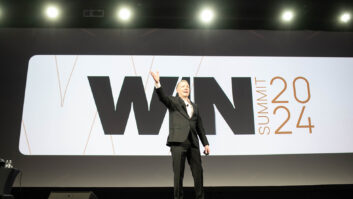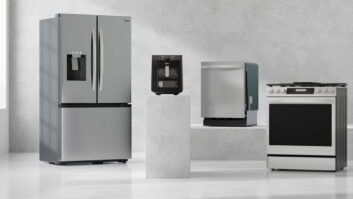NEW YORK — Once upon a time, the retailing world revolved around the department store.
If you needed a new TV, sofa, suit, coffeemaker or a refrigerator, you headed to the local flagship and browsed their departments, while (mostly) commissioned salespeople guided you through their store’s unique product mixes. For some, those were the days.
Decades later, following revolutions of catalog shopping and showrooms, big-box specialty chains, dedicated TV shopping channels, mega discounters, warehouse clubs, the Internet and m-commerce, the all-under-one-roof retailing business concept is enjoying a bit of a resurgence, at least among CE retailers.
A growing wave of CE specialists are looking beyond their traditional bread-and butter A/V, entertainment, majaps and handheld device assortments and venturing into diverse new inventories such as mattresses and bedding, large fitness equipment, musical instruments, indoor home-theater furniture, casual outdoor furniture, high-end grills to full-blown outdoor kitchens, and home energy management products like generators and even solar panels.
The reasons are myriad, according to a cross-section of industry execs and analysts reached by TWICE, but they can be mostly boiled down to the black and white of retailing: traffic and profit.
Jerry Satoren, CE sales VP for distributor DSI Systems, commented, “I have been watching many of our retailers make more and more floor space available to bedding, furniture and even exercise equipment. Many traditional TV/appliance dealers are seriously considering any product category that is an ‘involved’ consumer purchase: one that comes in a big box and requires delivery.”
Take mattresses: Bill Bazemore, Nationwide Marketing Group furniture VP, estimated that 60 percent of the buying group’s member retailers are in the bedding business. “The category is here to stay for our retailers. It’s the easiest category to expand into. It requires minimal floor space and low inventory costs but high turns. It creates a footprint and drives more traffic to the store. Most importantly, margins can hit 50-plus points and it opens up a whole other opportunity for attachment sales: bed frames, pillows, sheets and comforters, and mattress protectors. If you don’t stock them in-store, the customer’s next stop will be Bed Bath & Beyond.”
Success in basic bedding can lead to other up-selling opportunities, including higher-end beds featuring motion or custom upholstery. “Plus, it’s an established marketplace with a relatively small number of key brands. I’m not exaggerating when I say that in some cases, the category saved some of our members’ businesses,” Bazemore added.
Another buying group, Mega Group USA, offers a turnkey Serta bedding program to its 1,600 members, featuring a display of 16 mattress SKUs, many exclusive to the group. Qualified retailers receive launch support, training, business analytics, advertising and local field support, the group said.
The NATM Buying Corp., witnessing the success of key members such as Nebraska Furniture Mart and R.C. Willey in the bedding business, has discussed a formal buying program for its retailers.
A successful foray into bedding often leads retailers to look to other rooms in the house for opportunity and furniture — long the bastion of stand-alone specialty stores on busy retail corridors — is a natural next step for some.
For instance, NATM stalwart Cowboy Maloney’s Electric City earlier this summer added furniture to three of its 11 stores, with dedicated showrooms offering packages of living room, dining room and bedroom furniture. Recliners and bedding are also offered.
The company, run by brothers Con, Eddie and Johnny Maloney, said the opportunity presented itself with the recent closure of several local furniture stores, and by the extra floor space that was freed up as rear-projection TVs were replaced by flat-panel models.
Stephen Bodnarchuk, associate VP/national sales for distributor M. Rothman & Co., echoed the Maloneys’ thinking. “With TVs and both music and computer software categories taking up less physical space in traditional brick-and-mortar store locations, many retailers are looking for additional categories to fill the space.”
Other NATM members have expanded their furniture selections in recent years, including Conn’s, Nebraska Furniture Mart and R.C. Willey. Other CE and majap retailers, including multiregional chain h.h.gregg, have also entered or expanded the category amid price and margin declines in CE.
Market Research firm IBISWorld pointed out that after a five-year lull due to the sluggish economy, the furniture business is poised for a rebound.
Citing the resurgence in the housing market, a recent IBISWorld report predicted higher disposable income and strong consumer sentiment will boost demand for furniture through 2018 and warned traditional furniture retailers that “the industry will continue to experience growing competition from other outlets. As people purchase houses, they tend to purchase items for decoration, home utility and cooking. Therefore, as long as people continue to purchase and live in homes, they will continue to need industry merchandise. In addition, product lifespan for the industry is between five and 10 years, so replacement purchases are frequently needed.”
Another hot category (pun intended) being driven by a resurgence in housing is the outdoor furniture, kitchen and grill space.
More than 15 million grills and smokers ship in North America every year, according to IBISWorld, and despite a significant number of those being sold through home improvement chains such as Lowe’s and The Home Depot, Nationwide’s Bazemore sees plenty of opportunity for CE specialists.
“What Lowe’s and Home Depot are doing is a container business. We can’t compete with that and we shouldn’t. We should be the step-up option. In the last eight years the average grill purchased from our members has risen to over $1,000. There’s a lot of margin built in to that kind of ticket,” Bazemore said.
To that end, the BrandSource buying group formed a division dedicated to outdoor furniture and appliances.
Called OutdoorSource, the division will make available to BrandSource members products ranging from barbecues to generators to patio furniture, with suppliers including Broil King, Coleman, Chicago Brick Oven, Kamado Joe, Napoleon Gourmet Grills, Poulan, Pacific Living and Sunheat.
Global Industry Analysts, a market research firm, explained the category’s traction. “In general, fashion and trends in the home decorating segment and lifestyle trends including outdoor rooms, ‘nesting’ and ‘cocooning’ drive demand for outdoor furniture. Over the years, these factors have contributed significantly to the growth of the industry and have irreversibly changed the industry’s landscape. In addition, demographic changes, housing sales, widespread adoption of Internet, outdoor renovation and environmental concerns also boost the outdoor furniture market.”
In the end, the traction with retailers is simpler to identify. “We’re always looking for ways to help our existing members drive additional foot traffic and increase profits,” said John White, BrandSource’s executive VP, appliances. — Additional reporting by Steve Smith and Alan Wolf












